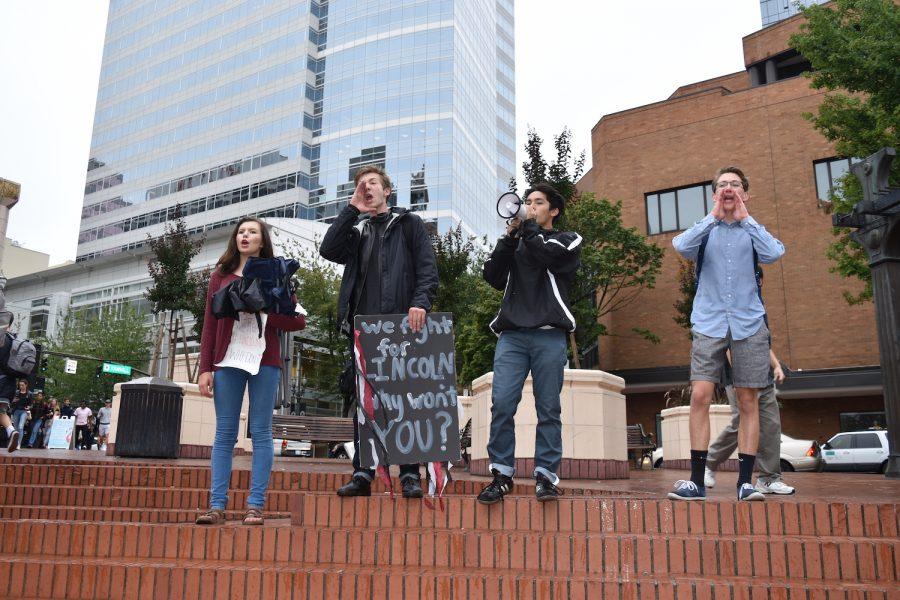Measuring up: How the walkout compares to past student protests
Students lead chants in Pioneer Square during what principal Peyton Chapman said was by far the largest student protest in her time at PPS.
Peyton Chapman has been a part of Portland Public Schools for more than 18 years, first as a teacher and then as an administrator. She has been a principal at Lincoln since June of 2006.
Throughout that time, she has never seen a walkout that compares to the one that occurred on Sept. 7. Two weeks ago, more than a thousand Lincoln students walked out of class at 9 a.m.
“I do not remember more than 50 students [leaving] really, maybe 75 to 100,” said Chapman, referencing the other four protests she has seen in her time at PPS. The other protests students have participated in the past 10 years have been Occupy Portland 2011, the proposed teacher strike in 2014, and the Forest Grove walkout over controversial sign from a student earlier this year.
Despite the high numbers, the walkout did not cause significant safety concerned.
“The Lincoln walkout did not have a significant impact on traffic or city operations and by all accounts was peaceful,” said Sgt. Peter Simpson, spokesman for the Portland Police Bureau.
Chapman said she was “impressed with the tone of decency” and thinks the students represented their school and district well.
Simpson added that “[police] had limited involvement, other than to monitor and ensure safety and to provide a visible presence outside Benson High School,” which was in a lockout. Though some Lincoln students were escorted off the premises, no arrests were made.
By contrast, Occupy Portland in contrast resulted in more than 20 arrests out of all the participants.
The previous protests attracted far fewer students, despite the fact that many students supported the ideas behind them. The lack of participation was not due to a lack of interest, but instead a lack of attachment to the cause, said Chapman. This protest was different because “it was local, relevant and engaging.”
The passion of the student leaders who organized the walkout had an infectious effect on the school. Students quickly jumped on board with the demonstrations, flowing out the school and gathering on the patio. The event was organized and led by students who had worked tirelessly on the issue and communicated their views through social media.
That allowed students to better comprehend the issue and make informed decisions. Using Facebook, student leaders kept others up to date on the state of the bond. A large social media presence was crucial to the success of the walkout.
In the past, walkouts at Lincoln have sometimes left students wanting more information. An example was the teacher walkout, during the winter of 2014. The leaders attempted to inform students through posters taped around the school.
None of the students currently at Lincoln will directly benefit from the school improvements the bond would fund. That made the walkout even more meaningful, said Chapman.
“That was part of the purity of it for me,” she said. Students did not participate to improve the quality of their own learning environment, “but [instead] the school that their siblings will go to and the school that kids across the river have to go to.”

